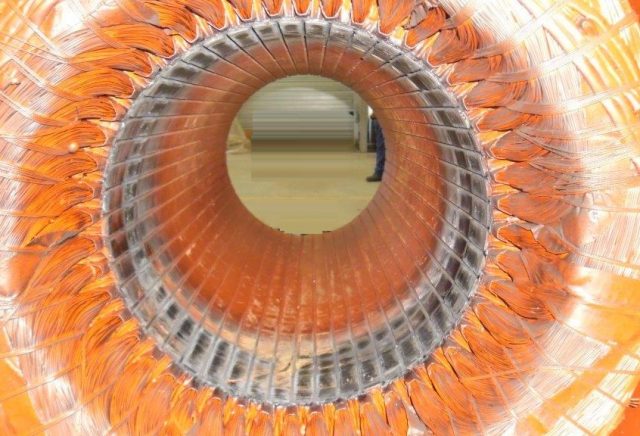Induction motors are susceptible to variations in supply voltage.Under such conditions, the performance of the motor will vary from the rating.
NEMA MG-1 2014[1]
14.30.2 Effects of Variation in Voltage on Temperature
With a 10 percent increase or decrease in voltage from that given on the nameplate, the heating at rated horsepower load may increase. Such operation for extended periods of time may accelerate the deterioration of the insulation system.14.30.3 Effect of Variation in Voltage on Power Factor
In a motor of normal characteristics at full rated horsepower load, a 10 percent increase of voltage above that given on the nameplate would usually result in a decided lowering in power factor. A 10 percent decrease of voltage below that given on the nameplate would usually give an increase in power factor.14.30.4 Effect of Variation in Voltage on Starting Torques
The locked-rotor and breakdown torque will be proportional to the square of the voltage applied.14.30.5 Effect of Variation in Voltage on Slip
An increase of 10 percent in voltage will result in a decrease of slip of about 17 percent, while a reduction of 10 percent will result in an increase of slip of about 21 percent. Thus, if the slip at rated voltage were 5 percent, it would be increased to 6.05 percent if the voltage were reduced 10 percent.
| Characteristics | 110% x Nominal Voltage | 90% x Nominal Voltage |
|---|---|---|
| Slip | -17% | +23% |
| Efficiency | +1% | 2% |
| Power factor | -3% | +1% |
| Current | -7% | +11% |
| Temperature °C | -4°C | +7°C |
| Starting torque | +21% | -19% |
| Starting current | > +10% | -10% |
| Notes: (+) increase, (-) decrease |
||
References:
- NEMA MG-1 2014 Motors and Generators
- Concepts of Motor Protection (1997) – BH Mosley
